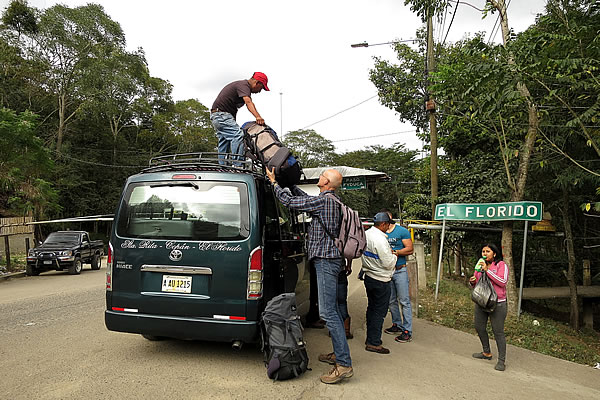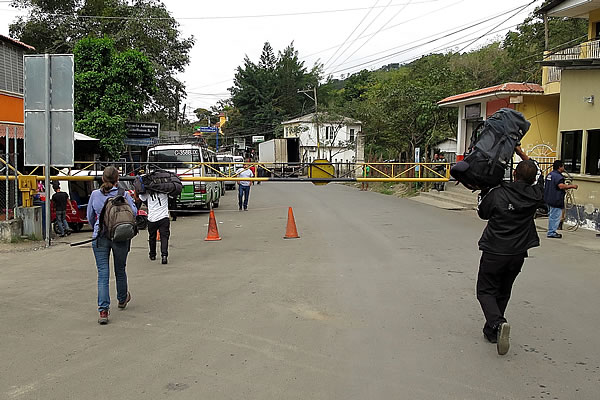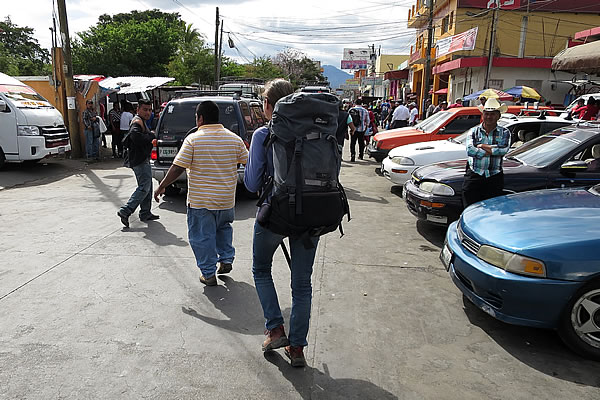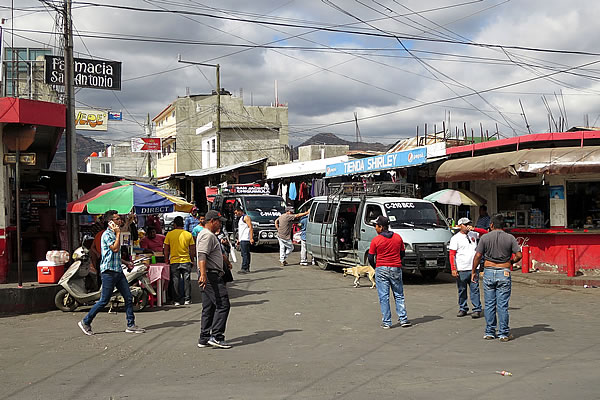

| Honduras to El Salvador, via Guatemala | |
San Miguel (El Salvador), January 20th 2018
|
|
|
|
|
It is currently quite messy in Honduras. The Presidential elections were held at the end of last year and the ‘loser’ does not accept his loss. And that is in itself a very reasonable point of view, since the winner (the incumbent president) has used all his influence to let the victory roll his way. There are at least enough signals for that. While counting the votes, it seemed for a long time that the challenging candidate, named Nasralla, would be the winner. After counting 60% of the votes, he was 5% ahead. But then it all became foggy. The counting of the remaining votes was suddenly stopped for 36 hours because of a 'computer problem'. And yes, you guessed it right, when the counting was finally completed it turned out that the current president had won with a difference of 1.6%. The OAS (Organization of American States), which had sent observers, also reported that irregularities had been detected during election day. All in all, enough ingredients for a revolt in this Central American country. Nasralla supporters took to the streets to demonstrate against the course of events and threw up barricades. And as has often happened in the countries in this region, the army acted harshly. The result: more than 20 deaths and possibly a dangerous cocktail for further escalation. We had already decided to bypass Honduras for the time being. The inauguration of the cheating President is scheduled for January 27th 2018, and it does not seem sensible to be in the country around this date. It could just be the day that hell breaks loose. But still there was one destination we really wanted to see in Honduras, the Mayan Ruins of Copán. These ruins are only 10 kilometres from the border with Guatemala and can therefore easily be visited from this neighbouring country. At that moment we were in Metapán in El Salvador (a 30 minutes’ drive from the Guatemalan border) and decided to go to Copán for a week, traveling from El Salvador to Guatemala, and from there crossing the border to Copán in Honduras. If during our visit things would go nasty in Honduras, we could be out of the country within half an hour. Just in case! |
|
 |
|
Our bags go off the bus at the border between Honduras and Guatemala |
|
Below is a brief description of the journey by public transport from Copán in Honduras to Metapán in El Salvador. Of course, the trip can also be done in the other direction. The entire trip includes four buses, two border crossings and lasts between 6 and 7 hours. The price is about US$ 7 (or Euro 5.80) per person. From the town of Copán Ruinas (where the Mayan Ruins of Copán are located), minibuses drive regularly to the border with Guatemala. The ride is 10 kilometres, takes about 20 minutes and costs 20 Honduran Lempiras per person. You can also pay 1 US$ per person for this short ride. The border crossing between Honduras and Guatemala is very smooth. The staff is friendly and efficient. On the Honduran side fingerprints are taken, and only when you enter Honduras (and not when you leave), you have to pay a ‘service fee’ of US$ 3 per person. We got an official receipt and therefore we assume that this is the current official rule. The immigration of Honduras and Guatemala sit side by side in the same building so you only have to move one desk for your entry stamp of Guatemala. We were even offered a free tourist map of Guatemala by one of the friendly border officials. There were no customs activities, so we entered Guatemala with unchecked bags. You walk across the border and as soon as you arrive on the territory of Guatemala, the boys of the bus company Litegua are already walking towards you to motivate you to take their bus. As always, we first ask what the ride will cost before we board (25 Quetzal per person = US $ 3.50). Just to prevent later discussions. The trip to the city of Chiquimula is about 50 kilometres and takes between one and a half and two hours. Before we get in, we exchange 15 US$ in Guatemalan Quetzal at one of the money changers that hang around the bus. For this amount we can easily make the trip to Metapán in El Salvador with two people. |
|
 |
|
A bus boy carries Ivonne's backpack to the bus at the border in Guatemala |
|
The road to Chiquimula is in excellent condition and the journey is progressing smoothly. Of course it is a stop-bus, which means that the bus stops very regularly to pick up or disembark passengers. In Chiquimula the bus ride ends at the private bus station of Litegua. We ask the driver where the buses leave for Frontera Anguiatu (on the border with El Salvador), and before we are well on our way to the right place, we are again approached by bus boys who lead us to the right bus. The price appears to be 15 Quetzal (US$ 2) per person. This time, our backpacks do not have to go on the roof of the bus, but they are stored in the small luggage compartment of the Toyota Coaster. Within a quarter of an hour we are on our way again for the 60 kilometres drive to Anguiatu. This journey takes about 3 hours and that is because we make stops at the villages Quetzaltepeque and Concepción Las Minas. At about two in the afternoon we arrive at the border with El Salvador. This border crossing is mainly used by freight trucks. Few people cross the border on foot here, so we do not have to wait long for our stamps. Here too, the border officials are very friendly. What a difference with 20 years ago when border crossings in Central America could really be a 'pain in the ass'. Perhaps this has something to do with the fact that Guatemala, Honduras, El Salvador and Nicaragua signed a border agreement in 2006 that allows the free movement of people between these countries. Most foreign travellers can stay up to 90 days in this region of four countries without any problems. That may also explain that once again, also at this crossing, our bags are not searched. Within 15 minutes we enter El Salvador without any problems. El Salvador uses the US dollar as a currency, so we do not have to exchange money with one of the money changers. Just across the border bus 235 is already waiting for us to bring us to Metapán for US $ 0.55 per person, a 12 kilometres ride that takes about half an hour. We get off in Metapán, but travellers who want to go to Santa Ana, one of El Salvador’s most pretty colonial towns, can stay on the bus, because bus 235 brings you all the way to Santa Ana. |
|
 |
|
Our bags go on the Litegua bus for the ride to Chiquimula |
|
 |
|
The small Litegua bus station in Chiquimula |
|
 |
|
Somebody leads us to the right bus in Chiquimula |
|
 |
|
The busy bus terminal / market in Chiquimula |
|
 |
|
In bus 235 in El Salvador, on the way to Metapán © copyright - Babakoto.eu / 2018 |
|